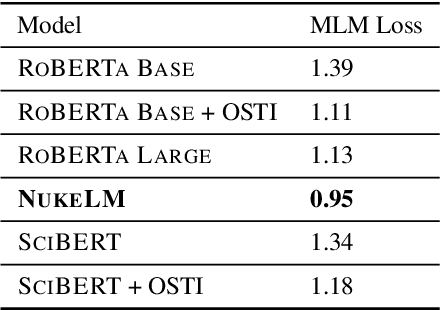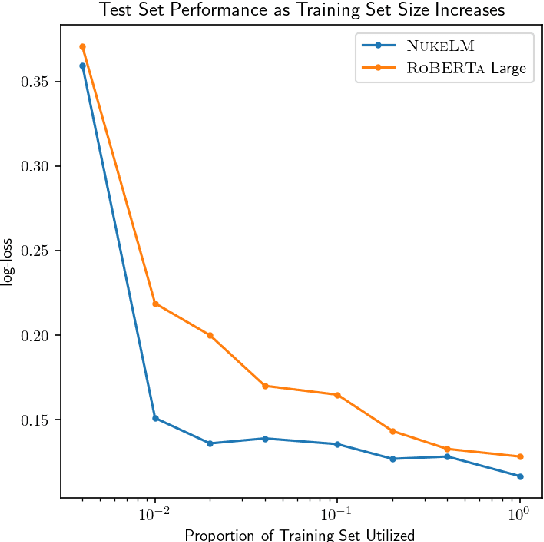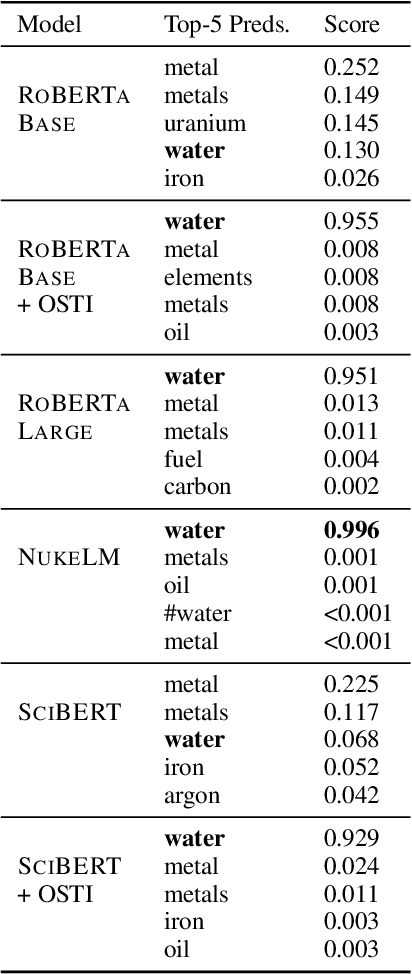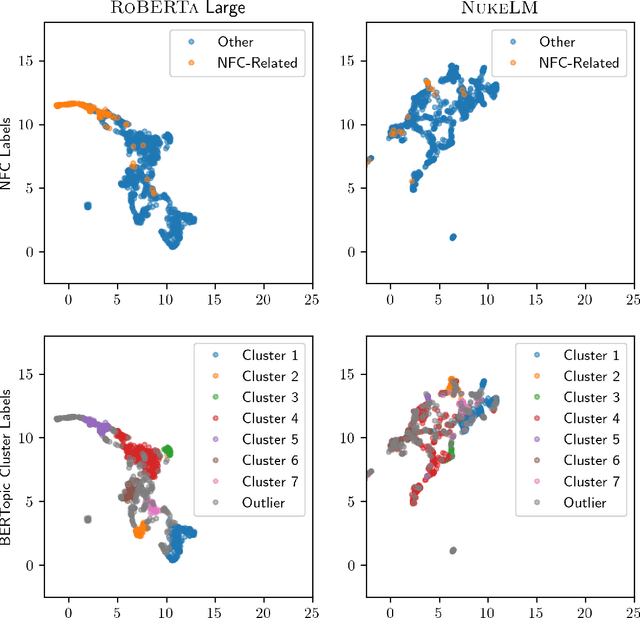NukeLM: Pre-Trained and Fine-Tuned Language Models for the Nuclear and Energy Domains
Paper and Code
May 25, 2021



Natural language processing (NLP) tasks (text classification, named entity recognition, etc.) have seen revolutionary improvements over the last few years. This is due to language models such as BERT that achieve deep knowledge transfer by using a large pre-trained model, then fine-tuning the model on specific tasks. The BERT architecture has shown even better performance on domain-specific tasks when the model is pre-trained using domain-relevant texts. Inspired by these recent advancements, we have developed NukeLM, a nuclear-domain language model pre-trained on 1.5 million abstracts from the U.S. Department of Energy Office of Scientific and Technical Information (OSTI) database. This NukeLM model is then fine-tuned for the classification of research articles into either binary classes (related to the nuclear fuel cycle [NFC] or not) or multiple categories related to the subject of the article. We show that continued pre-training of a BERT-style architecture prior to fine-tuning yields greater performance on both article classification tasks. This information is critical for properly triaging manuscripts, a necessary task for better understanding citation networks that publish in the nuclear space, and for uncovering new areas of research in the nuclear (or nuclear-relevant) domains.
 Add to Chrome
Add to Chrome Add to Firefox
Add to Firefox Add to Edge
Add to Edge